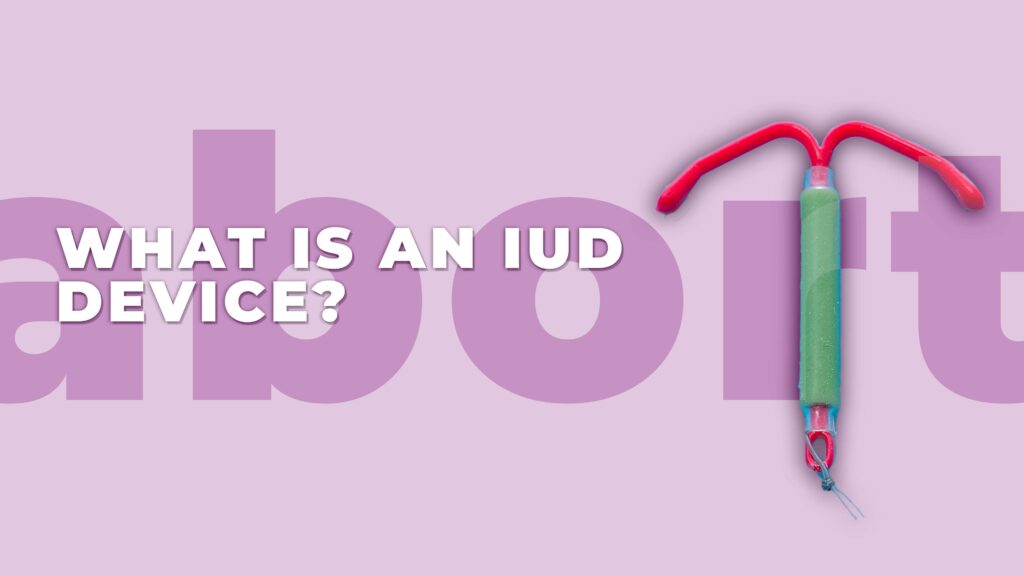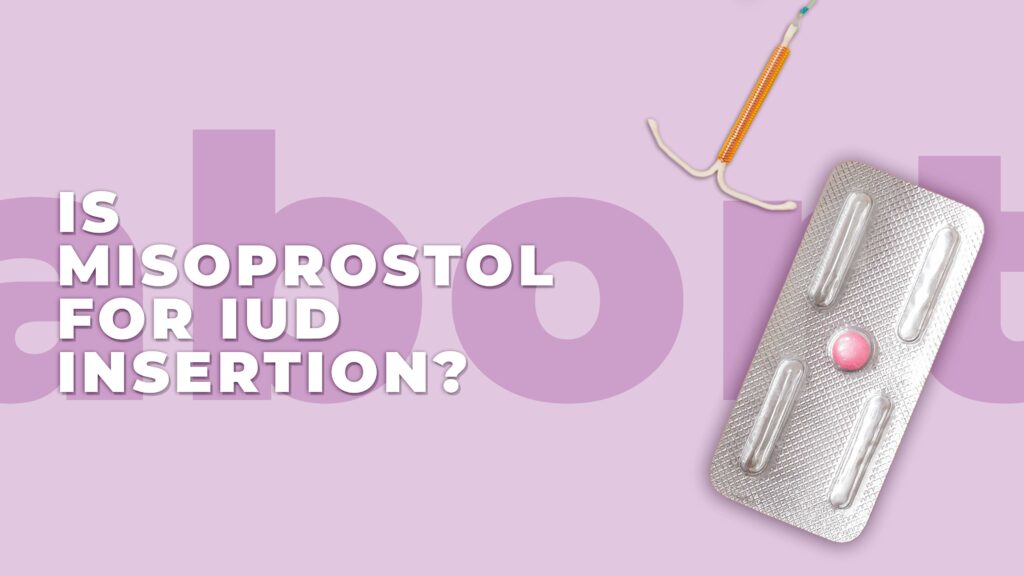In this article, we determine if the use of misoprostol before IUD insertion in women makes the insertion process easier and less painful. According to some studies, misoprostol does not have any effect on the difficulty of insertion or the patient’s perception of pain.
What is an IUD device?

IUD stands for Intrauterine Device. An IUD, or intrauterine device, is a small, T-shaped object that is inserted into the uterus to prevent pregnancy. It works by blocking sperm from reaching and fertilizing eggs. IUDs are highly effective, with a less than 1% chance of pregnancy when used correctly. The advantages of using an IUD include its long-term effectiveness, ease of use, and upfront cost. Additionally, IUDs can be safely used while breastfeeding.
IUDs are divided into 2 types:
- hormonal IUDs
- copper IUDs
IUDs work by altering the movement of sperm cells, making it impossible for them to reach and fertilize an egg. Copper IUDs like Paragard make it difficult for sperm to reach the egg by releasing copper, which sperm do not like. Hormonal IUDs such as Mirena, Kyleena, Liletta, and Skyla use hormones to prevent pregnancy in two ways: thickening the cervical mucus to block and trap sperm and sometimes preventing ovulation, so there is no egg for sperm to fertilize.
One of the benefits of IUDs is that they are long-lasting but not permanent. They can be easily removed by a nurse or doctor, and you can become pregnant right after removal.
There are currently two types of IUDs available in the United States, the copper T380 (Paragard) and the levonorgestrel IUD (Mirena). These devices are highly effective, with a low failure rate of less than 1% in the first year and even lower rates in subsequent years. The cervix of nulliparous women is smaller in diameter, making IUD insertion more difficult and uncomfortable. To mitigate this, some family planning providers administer a dose of misoprostol prior to insertion, as the drug is known to cause cervical dilation. But does the use of misoprostol for cervical ripening prior to insertion of an intrauterine device (IUD) provide any ease of insertion for the provider or decrease reported pain for the patient?
Is Misoprostol for IUD insertion?

Misoprostol is a medication that is used to finish a medication abortion that has been started with mifepristone. This method is commonly referred to as the abortion pill. It is less effective than mifepristone, but in some countries, it is used alone for abortion. Misoprostol has a history of being used off-label for softening the cervix and inducing labor. It can be administered in multiple ways – orally, vaginally, under the tongue, or inside the cheek – allowing self-administration.
Researchers conducted a double-blind, randomized, controlled trial to determine if administering buccal misoprostol to nulliparous women (women who have not given birth) prior to IUD insertion would make the process easier and less painful. Participants were assigned to receive either misoprostol or a placebo. The study found that while providers reported similar ease of insertion in both groups, patients who received misoprostol reported higher levels of pain before and after the IUD was inserted compared to those who received the placebo.
The trial suggests that misoprostol does not make IUD insertion easier for providers and increases pain for patients. Therefore, the use of misoprostol for cervical ripening prior to IUD insertion in nulliparous women should not be recommended based on these results.
Contrary to belief, this study found that IUD insertion in nulliparous women is not difficult for providers, and the pain experienced by women is manageable. Misoprostol was found to not improve the ease of insertion for providers and increase patient pain. Overall, it is not recommended to use buccal misoprostol for cervical ripening prior to IUD insertion.
Another randomized clinical trial conducted on women with a dose of 400 µg of Misoprostol administered vaginally 4 hours prior to IUD insertion found that although the ease of insertion was increased and the incidence of pain during the procedure was reduced, but the frequency of cramps increased following misoprostol use.
Overall, providers do not perceive IUD insertion in this group of women as “difficult,” and women perceive the pain of IUD insertion as “acceptable.”
The Bottom Line
It’s important to note that while the use of misoprostol may not be beneficial for all patients, it can be useful in certain situations, such as for women with a history of a previously difficult IUD insertion or for women with a particularly rigid cervix. In these cases, the use of misoprostol can be considered on a case-by-case basis.
Patients should discuss any potential risks and benefits of misoprostol use with their healthcare provider before proceeding with IUD insertion. This will help ensure that the best decision is made for the individual patient’s specific needs and circumstances.
Overall, it is important to have a conversation with your healthcare provider about the use of misoprostol before an IUD insertion, as it may or may not be beneficial for you, and it’s important to weigh the pros and cons.
References
- Chen MJ, Creinin MD. Mifepristone With Buccal Misoprostol for Medical Abortion: A Systematic Review. Obstet Gynecol. 2015 Jul;126(1):12-21. doi: 10.1097/AOG.0000000000000897. PMID: 26241251.https://journals.lww.com/greenjournal/Abstract/2015/07000/Mifepristone_With_Buccal_Misoprostol_for_Medical.4.aspx
- Adriana Scavuzzi, Alex S.R. Souza, Aurélio A.R. Costa, Melania M.R. Amorim, Misoprostol prior to inserting an intrauterine device in nulligravidas: a randomized clinical trial, Human Reproduction, Volume 28, Issue 8, August 2013, Pages 2118–2125, https://doi.org/10.1093/humrep/det240
- Lathrop E, Haddad L, McWhorter CP, Goedken P. Self-administration of misoprostol prior to intrauterine device insertion among nulliparous women: a randomized controlled trial. Contraception. 2013 Dec;88(6):725-9. doi: 10.1016/j.contraception.2013.07.011. Epub 2013 Aug 6. PMID: 24034580.https://www.contraceptionjournal.org/article/S0010-7824(13)00544-1/fulltext
- Guttmacher Institute. Contraceptive use in the United States [fact sheet]. August 2013. Available at: http://www.guttmacher.org/pubs/fb_contr_use.html Accessed September 25, 2013.





